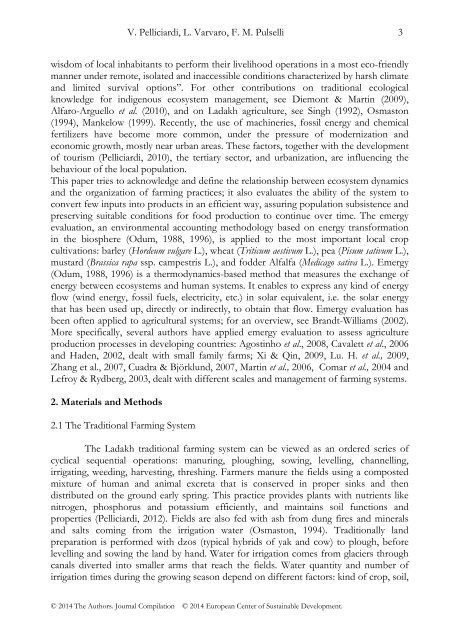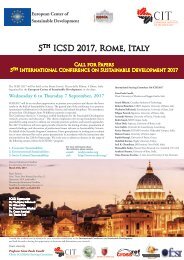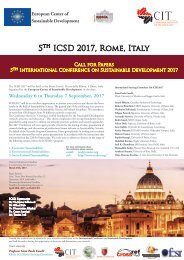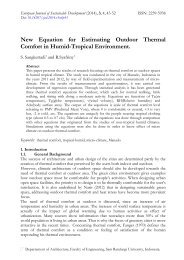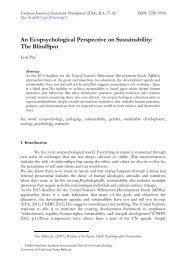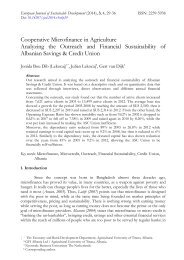Emergy evaluation of a traditional farming system. Case study: Leh District (Ladakh - Indian Trans-Himalaya)
Ladakh traditional farming system has been included on the F.A.O. list of possible “Globally Important Agricultural Heritage Systems”, worthy of being preserved and conserved. The paper describes and assesses cultivation practices in a typical familymanaged farm, located in central Ladakh, analysing how natural resources are exploited, conserved and recycled. Emergy evaluation, an environmental accounting methodology, has been applied to evaluate and compare five staple crop productions: barley, wheat, pea, mustard, and fodder alfalfa. Unit Emergy Values of products (UEV, emergy per unit product, a measure of the environmental production cost) are calculated, taking into account the inputs to production such as water from glaciers, soil fertility, human and animal labour, and more. Results show that the traditional agricultural practices in Ladakh, completely supported by renewable flows, are efficient in the use of local resources. In fact, the UEVs of agroproducts are similar to those of analogous products of conventional agriculture (e.g. 5.27E+05 and 6.64E+05 semj/J for barley and wheat in Ladakh, respectively; 7.37E+05 semj/J for corn in USA), though the inputs of Ladakh agriculture are strongly limited in type and quantity. At the same time, local farmers can create, maintain and rebuild soil functions whose UEV is 1.62E+07 semj/J. Keywords: Ladakh, agrosystem, emergy, environment, sustainability
Ladakh traditional farming system has been included on the F.A.O. list of possible “Globally Important Agricultural Heritage Systems”, worthy of being preserved and
conserved. The paper describes and assesses cultivation practices in a typical familymanaged farm, located in central Ladakh, analysing how natural resources are exploited, conserved and recycled. Emergy evaluation, an environmental accounting methodology, has been applied to evaluate and compare five staple crop productions: barley, wheat, pea, mustard, and fodder alfalfa. Unit Emergy Values of products (UEV, emergy per unit product, a measure of the environmental production cost) are calculated, taking into account the inputs to production such as water from glaciers, soil fertility, human and
animal labour, and more. Results show that the traditional agricultural practices in Ladakh,
completely supported by renewable flows, are efficient in the use of local resources. In fact, the UEVs of agroproducts are similar to those of analogous products of conventional agriculture (e.g. 5.27E+05 and 6.64E+05 semj/J for barley and wheat in Ladakh, respectively; 7.37E+05 semj/J for corn in USA), though the inputs of Ladakh agriculture are strongly limited in type and quantity. At the same time, local farmers can create, maintain and rebuild soil functions whose UEV is 1.62E+07 semj/J.
Keywords: Ladakh, agrosystem, emergy, environment, sustainability
Create successful ePaper yourself
Turn your PDF publications into a flip-book with our unique Google optimized e-Paper software.
V. Pelliciardi, L. Varvaro, F. M. Pulselli 3<br />
wisdom <strong>of</strong> local inhabitants to perform their livelihood operations in a most eco-friendly<br />
manner under remote, isolated and inaccessible conditions characterized by harsh climate<br />
and limited survival options”. For other contributions on <strong>traditional</strong> ecological<br />
knowledge for indigenous eco<strong>system</strong> management, see Diemont & Martin (2009),<br />
Alfaro-Arguello et al. (2010), and on <strong>Ladakh</strong> agriculture, see Singh (1992), Osmaston<br />
(1994), Mankelow (1999). Recently, the use <strong>of</strong> machineries, fossil energy and chemical<br />
fertilizers have become more common, under the pressure <strong>of</strong> modernization and<br />
economic growth, mostly near urban areas. These factors, together with the development<br />
<strong>of</strong> tourism (Pelliciardi, 2010), the tertiary sector, and urbanization, are influencing the<br />
behaviour <strong>of</strong> the local population.<br />
This paper tries to acknowledge and define the relationship between eco<strong>system</strong> dynamics<br />
and the organization <strong>of</strong> <strong>farming</strong> practices; it also evaluates the ability <strong>of</strong> the <strong>system</strong> to<br />
convert few inputs into products in an efficient way, assuring population subsistence and<br />
preserving suitable conditions for food production to continue over time. The emergy<br />
<strong>evaluation</strong>, an environmental accounting methodology based on energy transformation<br />
in the biosphere (Odum, 1988, 1996), is applied to the most important local crop<br />
cultivations: barley (Hordeum vulgare L.), wheat (Triticum aestivum L.), pea (Pisum sativum L.),<br />
mustard (Brassica rapa ssp. campestris L.), and fodder Alfalfa (Medicago sativa L.). <strong>Emergy</strong><br />
(Odum, 1988, 1996) is a thermodynamics-based method that measures the exchange <strong>of</strong><br />
energy between eco<strong>system</strong>s and human <strong>system</strong>s. It enables to express any kind <strong>of</strong> energy<br />
flow (wind energy, fossil fuels, electricity, etc.) in solar equivalent, i.e. the solar energy<br />
that has been used up, directly or indirectly, to obtain that flow. <strong>Emergy</strong> <strong>evaluation</strong> has<br />
been <strong>of</strong>ten applied to agricultural <strong>system</strong>s; for an overview, see Brandt-Williams (2002).<br />
More specifically, several authors have applied emergy <strong>evaluation</strong> to assess agriculture<br />
production processes in developing countries: Agostinho et al., 2008, Cavalett et al., 2006<br />
and Haden, 2002, dealt with small family farms; Xi & Qin, 2009, Lu. H. et al., 2009,<br />
Zhang et al., 2007, Cuadra & Björklund, 2007, Martin et al., 2006, Comar et al., 2004 and<br />
Lefroy & Rydberg, 2003, dealt with different scales and management <strong>of</strong> <strong>farming</strong> <strong>system</strong>s.<br />
2. Materials and Methods<br />
2.1 The Traditional Farming System<br />
The <strong>Ladakh</strong> <strong>traditional</strong> <strong>farming</strong> <strong>system</strong> can be viewed as an ordered series <strong>of</strong><br />
cyclical sequential operations: manuring, ploughing, sowing, levelling, channelling,<br />
irrigating, weeding, harvesting, threshing. Farmers manure the fields using a composted<br />
mixture <strong>of</strong> human and animal excreta that is conserved in proper sinks and then<br />
distributed on the ground early spring. This practice provides plants with nutrients like<br />
nitrogen, phosphorus and potassium efficiently, and maintains soil functions and<br />
properties (Pelliciardi, 2012). Fields are also fed with ash from dung fires and minerals<br />
and salts coming from the irrigation water (Osmaston, 1994). Traditionally land<br />
preparation is performed with dzos (typical hybrids <strong>of</strong> yak and cow) to plough, before<br />
levelling and sowing the land by hand. Water for irrigation comes from glaciers through<br />
canals diverted into smaller arms that reach the fields. Water quantity and number <strong>of</strong><br />
irrigation times during the growing season depend on different factors: kind <strong>of</strong> crop, soil,<br />
© 2014 The Authors. Journal Compilation © 2014 European Center <strong>of</strong> Sustainable Development.


